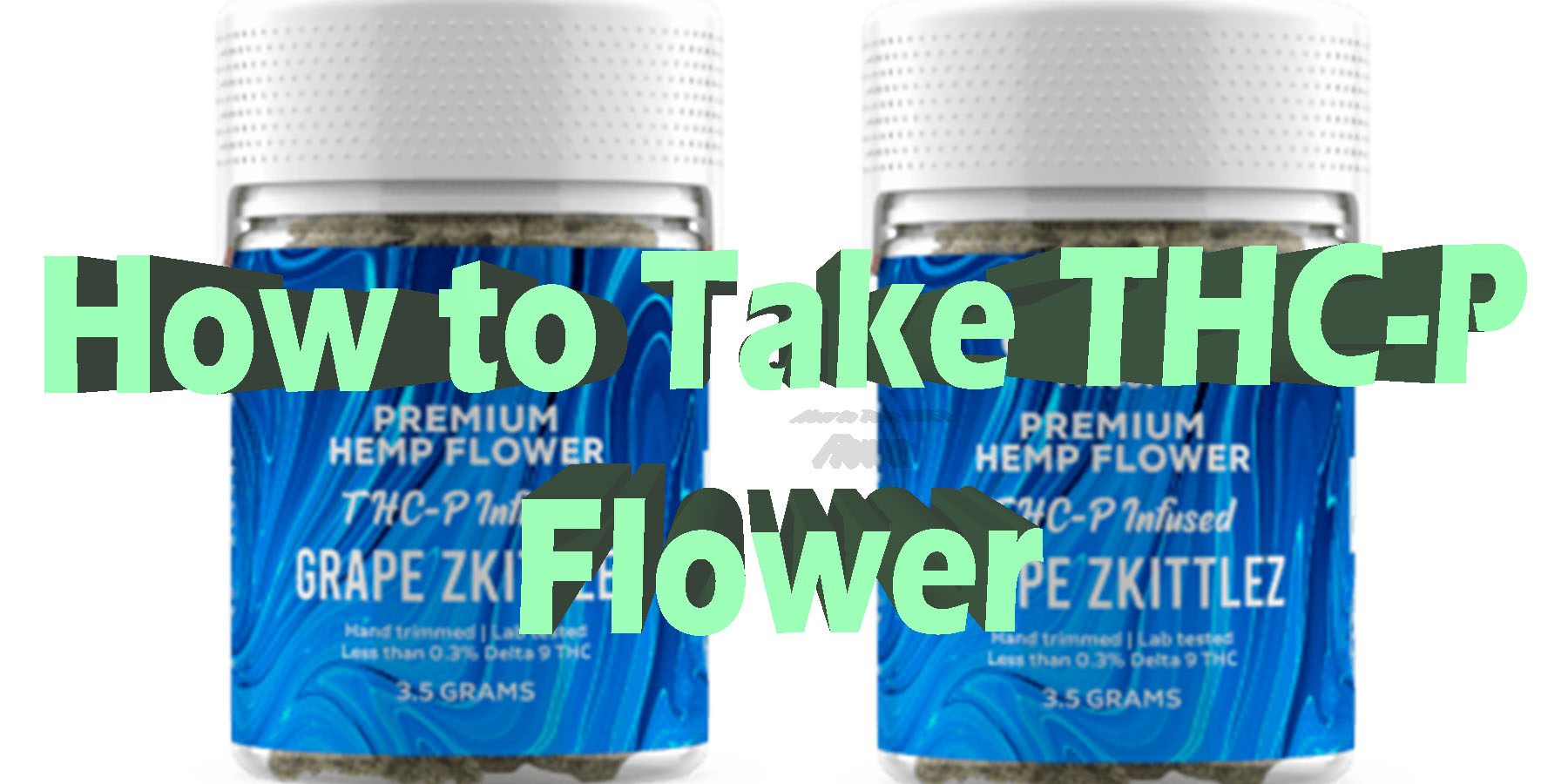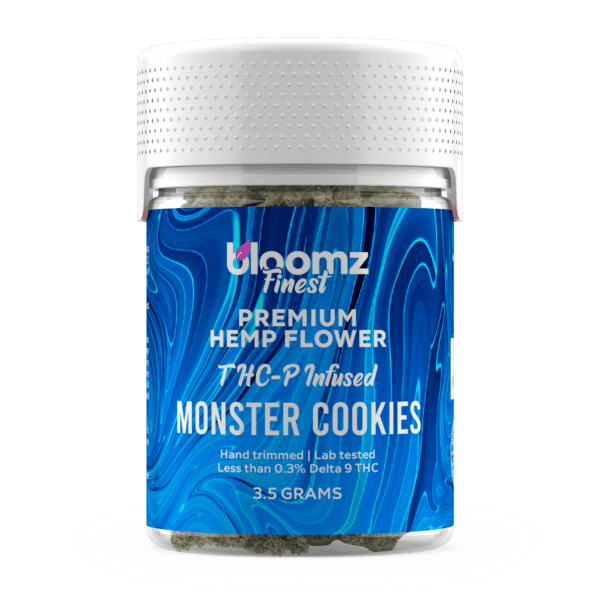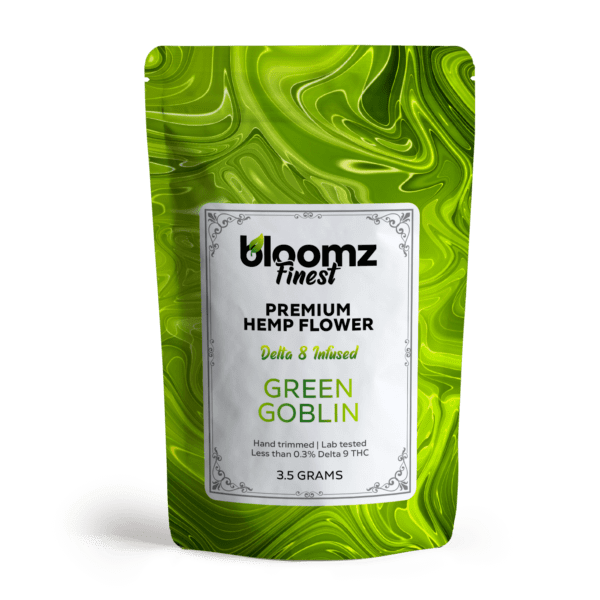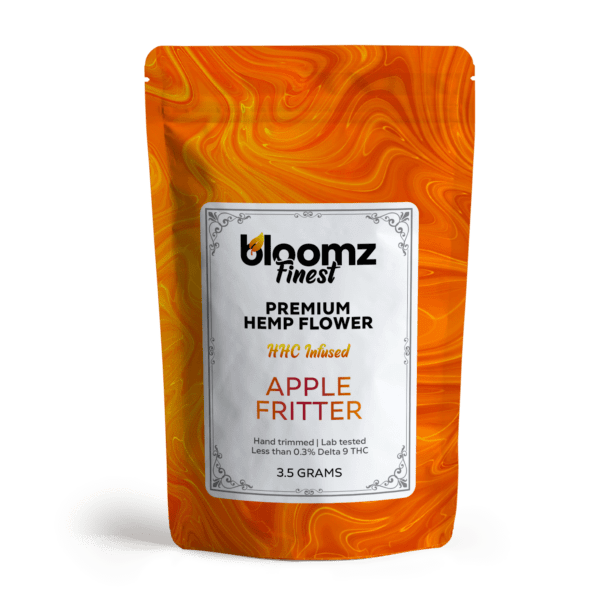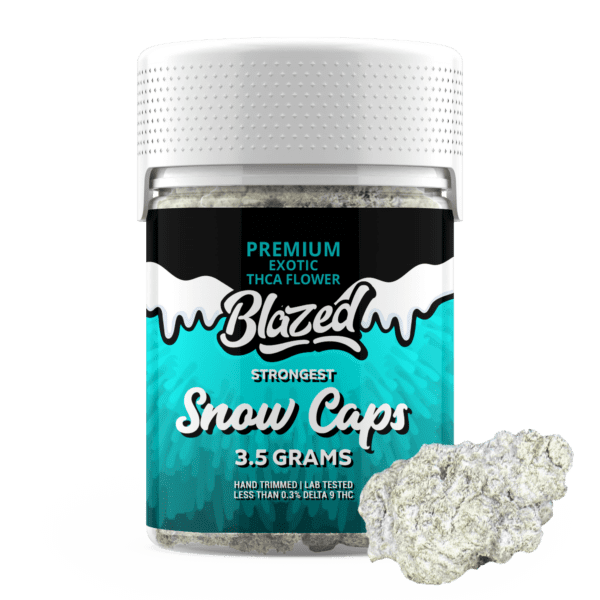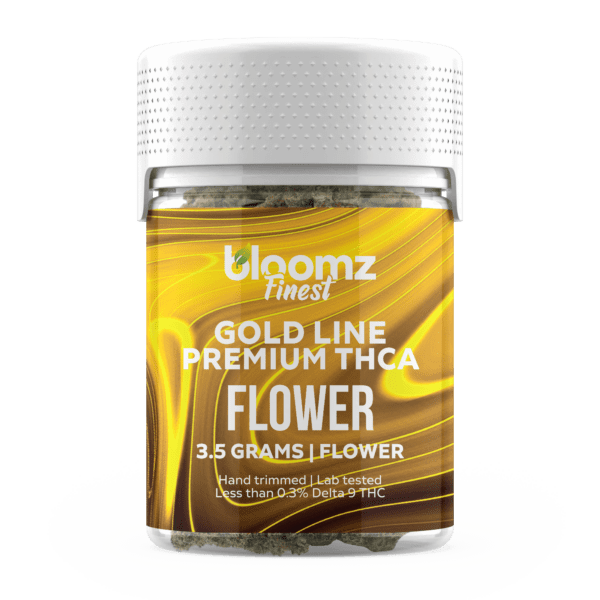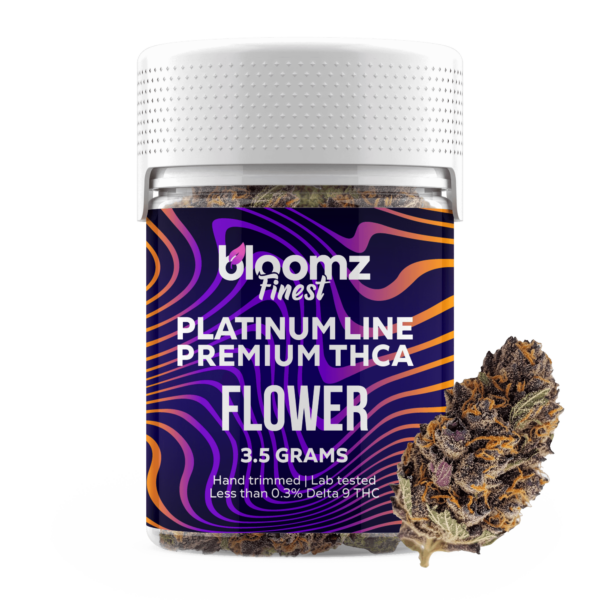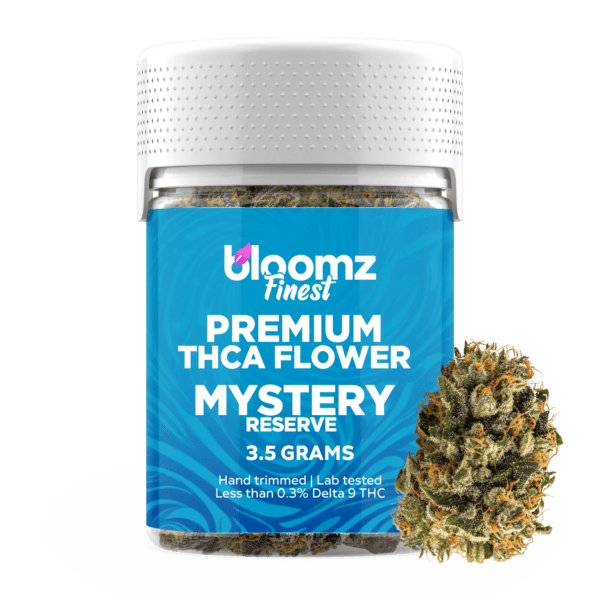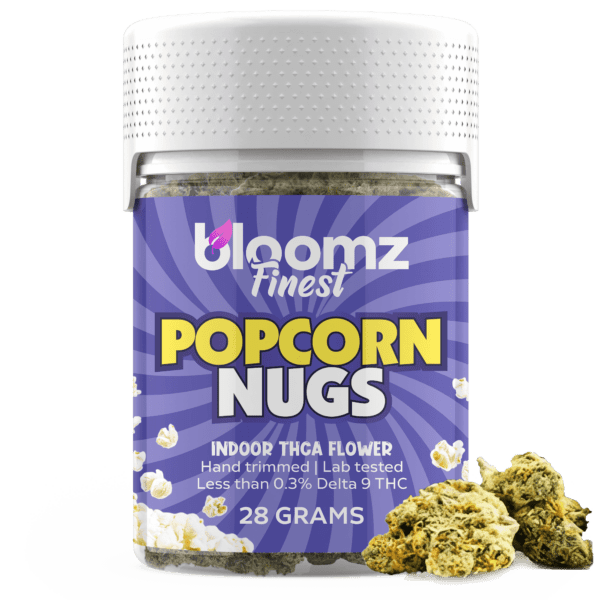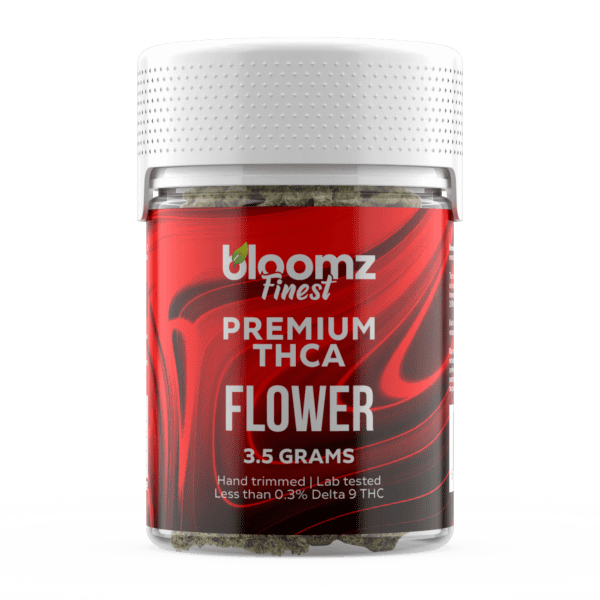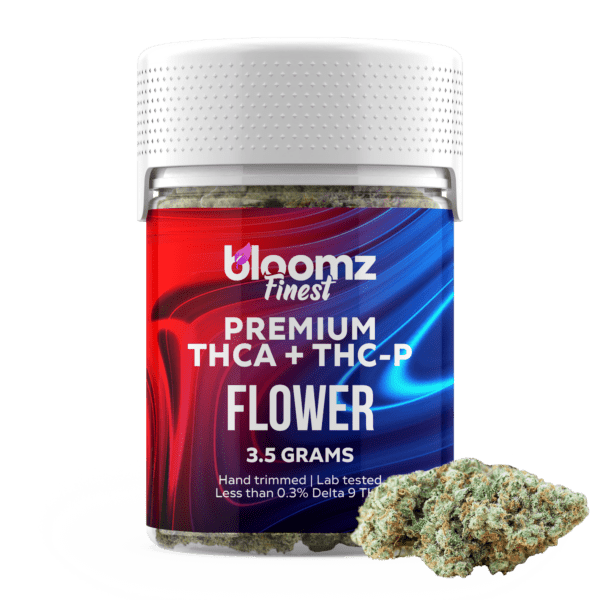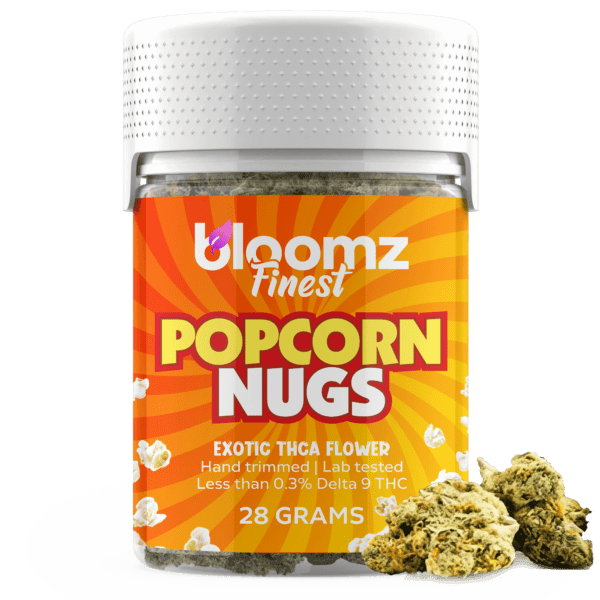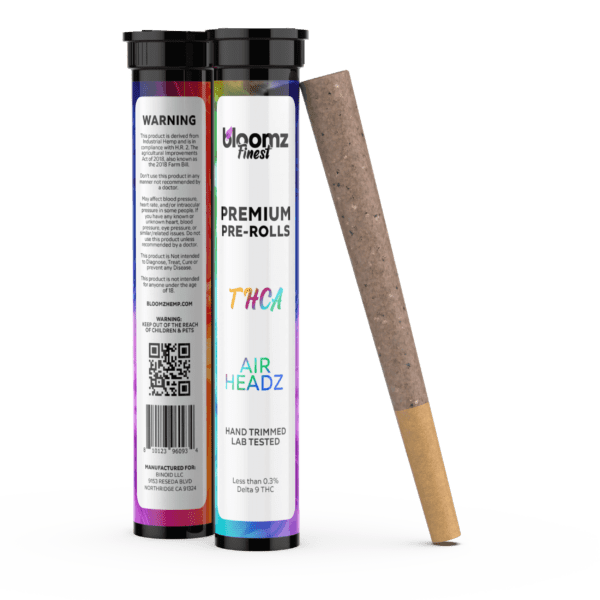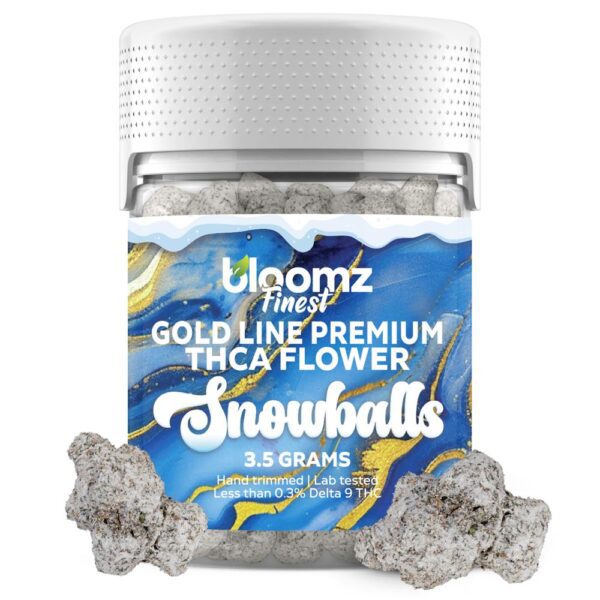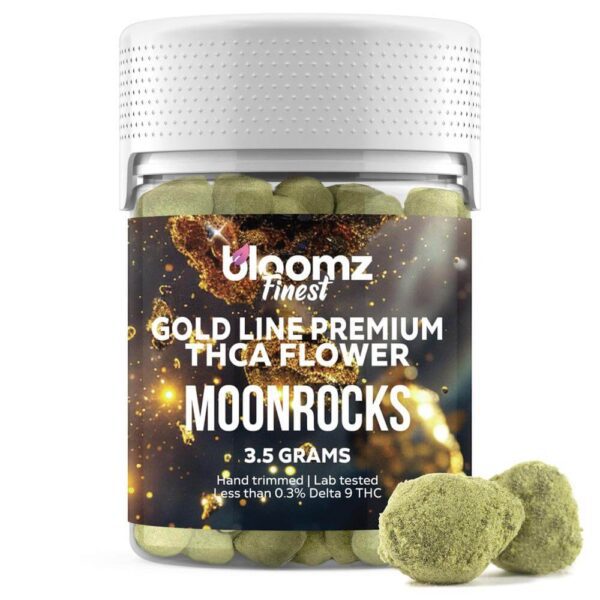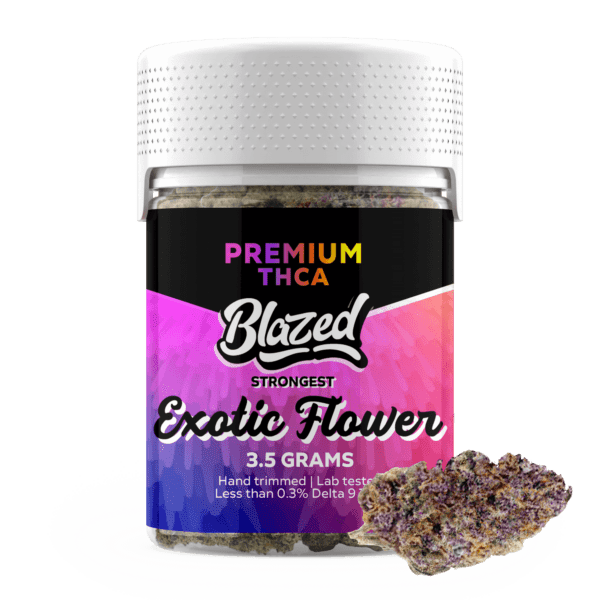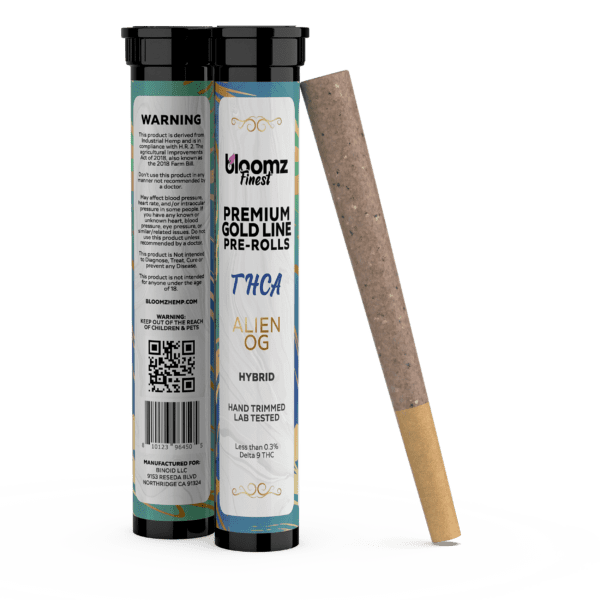Heard whispers of THC-P flower and feeling that pull of the unknown? It’s one of the newer, more talked-about additions to the hemp galaxy, sparking intense curiosity among cannabinoid explorers. Often described as possessing a unique and powerful character, THC-P flower represents a frontier for those seeking experiences beyond the familiar. But venturing into potent territory demands more than just curiosity; it requires respect, knowledge, and a seriously cautious approach. If you’re ready to learn about navigating this specific botanical, consider this your essential pre-flight checklist, designed to guide you through understanding, selecting, and engaging with THC-P flower responsibly. Let’s unlock the knowledge needed to approach this potent powerhouse with the care it deserves.
TO BUY THC-P FLOWER CLICK HERE
Recommended products
THC-P Flower 101
Tetrahydrocannabiphorol is a cannabinoid structurally similar to Delta 9 THC but with a key difference: it possesses a longer alkyl side chain (seven carbon atoms versus THC’s five). Scientific data suggests this extended side chain allows THC-P to bind much more effectively to the body’s CB1 receptors – the primary receptor responsible for THC’s psychoactive effects. This enhanced binding affinity is theorized to make THC-P significantly more potent than conventional Delta 9 THC, potentially delivering profound effects even at lower doses, although individual experiences can vary widely.
Now, the THC-P flower available commercially isn’t grown to be naturally high in this cannabinoid as instead, it is created by taking hemp flower (typically high in CBD or other non-psychoactive cannabinoids and legally compliant with ≤ 0.3% Delta-9 THC) and infusing or coating it with a concentrated THC-P distillate. This distillate is usually synthesized in a lab, often starting from CBD derived from legal hemp, through specialized chemical processes.
The manufacturing process involves applying this potent THC-P distillate onto the chosen hemp flower buds. Techniques can include spraying a fine mist of the heated distillate over the flower for even coverage or employing other infusion methods designed to thoroughly incorporate the THC-P into the plant material. The goal is to create a final product that looks and feels like traditional cannabis flower but carries a significant, added payload of THC-P, ready to be released upon combustion or vaporization, potentially offering an experience marked by intense euphoria or deep relaxation.
Consequently, THC-P flower serves as a vehicle for consuming the potent cannabinoid THC-P via the familiar method of smoking or vaping buds. It combines the physical characteristics and existing cannabinoid/terpene profile of the base hemp flower with the amplified potential effects attributed to the added THC-P distillate. Given its reported high potency, THC-P flower is generally recommended for experienced cannabis users or those seeking particularly strong effects, always emphasizing cautious dosing, especially when trying it for the first time.
Recommended products
Who is THC-P Flower Actually Tailored For?
Given its reputation for significantly elevated potency, THC-P flower is certainly not an entry-level product. It caters to a very specific segment of the cannabis and hemp market, attracting individuals with particular needs, tolerances, or exploratory desires. Understanding this target audience is crucial before even considering trying THC-P flower yourself, such as:
Seasoned Cannabis Veterans: Individuals with extensive experience using various cannabinoids, particularly high-potency Delta 9 THC products, are the primary audience. They may be seeking novel effects or a higher intensity level that other cannabinoids no longer provide due to tolerance.
Users with High Cannabinoid Tolerance: Those who find that standard THC products offer diminished effects due to regular use might explore THC-P flower for its potential to deliver a more pronounced experience even with their existing tolerance levels.
Explorers Seeking Intense Effects: Consumers specifically looking for powerful, profound, and potentially long-lasting euphoric or relaxing sensations might gravitate towards THC-P, understanding and accepting its amplified potency.
Individuals Seeking Long-Lasting Effects: Experienced users who prefer effects with a significantly extended duration might explore THC-P flower, as it’s often reported to provide sensations that persist much longer than traditional Delta 9 THC following consumption, potentially aligning with preferences for less frequent redosing during extended periods of relaxation or activity.
Cannabinoid Connoisseurs: Enthusiasts deeply interested in the nuances and effects of rare or novel cannabinoids might try THC-P flower out of sheer curiosity and a desire to understand its unique properties compared to others like Delta 8, Delta 9, HHC, or CBD. Crucially, this is NOT typically suitable for: Beginners, those with low THC tolerance, individuals prone to feeling overwhelmed by psychoactive effects, or anyone unsure about navigating extremely potent substances.
Recommended products
5 Key Things to Look for in THC-P Flower
Approaching the potent world of THC-P Flower demands an exceptionally high level of scrutiny when selecting a product. Due to its intensity and the nuances of its production (often involving applying THC-P distillate to hemp flower), ensuring quality, safety, and accurate labeling is absolutely paramount. Cutting corners here could lead to unpredictable or unpleasant experiences. Focus on these five critical aspects to guide your purchase:
Lab Testing: This is non-negotiable and even more critical for THC-P. Demand recent third-party Certificates of Analysis (COAs) specific to the batch you’re considering. These labs must verify not only the accurate THC-P potency (so you know what you’re dealing with) but also confirm the Delta 9 THC level is below the legal 0.3% limit. Crucially, look for comprehensive panel testing that includes checks for residual solvents (especially if conversion/distillate application methods are used), pesticides, heavy metals, and microbial contaminants (mold, mildew, bacteria). If a vendor doesn’t provide easy access to verifiable, complete, and recent COAs, consider it a major red flag.
Source and Cultivation of Base Flower: High-quality THC-P flower starts with premium hemp flower as its base. Investigate the origin of this hemp. Was it grown domestically (USA preferred for potentially stricter farming regulations) using organic or sustainable practices? Knowing the hemp was cultivated carefully minimizes risks of contaminants like pesticides being present before the THC-P is even applied. Also, inquire about the method used to apply the THC-P distillate; infusion techniques may offer more consistency than simple spraying, which can lead to uneven “hot spots” of extreme potency on the buds.
Terpene and Strain Profiles: While the primary driver of the experience will be the potent THC-P, the terpenes present in the base hemp flower still play a significant role in shaping the aroma, flavor, and potentially modulating the overall effects (entourage effect). Reputable vendors should provide information on the base flower’s strain (e.g., Indica, Sativa, Hybrid classification) and ideally its dominant terpene profile (e.g., rich in Myrcene, Limonene, Caryophyllene). This allows you to select a profile that might lean towards more relaxing or potentially uplifting background notes, complementing the core THC-P effects.
Visual Inspection: Examine the THC-P flower closely. When buying online, look for websites with clear, high-resolution photos from multiple angles. The buds should look healthy, well-trimmed, and generally appealing. Note how the THC-P distillate appears – is it evenly coated, or does it look clumped, excessively wet, or unevenly sprayed? There might be a slight sheen or altered texture due to the distillate. If buying in person, look for vibrant color (appropriate for the strain), good bud density, and check for any obvious signs of mold (fuzzy spots), mildew, or excessive stems/seeds. Avoid flower that looks discolored (brownish/yellowish), overly dry/brittle, or gives any indication of poor quality base material.
Aroma Check: The flower’s scent should be pleasant and indicative of its terpene profile. When you open the package, you should perceive distinct aromatic notes – perhaps earthy, citrusy, piney, or floral, depending on the strain. A strong, appealing aroma suggests good preservation of terpenes. Be wary of flower with very little scent (might be old or poorly stored) or off-putting smells like mustiness, ammonia, hay, or harsh chemicals. These could indicate mold, poor curing, or issues with the THC-P application process. A vibrant aroma often correlates with a more flavorful and well-rounded experience.
Recommended products
What are the Methods for Taking THC-P Flower?
Having carefully selected your THC-P flower, the next crucial decision involves choosing your consumption method, as the way you choose to consume it will drastically influence the onset, intensity, and duration of the experience – perhaps even more so than with less potent cannabinoids. Essentially, each pathway offers unique characteristics, and understanding these is vital for making an informed, safe, and appropriate choice when dealing with a substance as powerful as THC-P.
Method #1: Smoking
Smoking THC-P Flower involves combusting the plant material and inhaling the resulting smoke, offering the most rapid method for cannabinoids to enter the bloodstream via the lungs. This technique uses familiar tools like pipes (simple hand pipes or more complex water pipes/bongs) or rolled options like joints (using rolling papers) or blunts (using cigar/hemp wraps). Due to the extremely high potency of THC-P, only a minuscule amount of flower is typically needed compared to standard THC or CBD flower. The effects onset very quickly, usually within minutes, allowing for almost immediate feedback.
This rapid onset can be advantageous for experienced users who want to carefully gauge effects in near real-time. However, the intensity can also escalate very quickly, making overconsumption a significant risk if not approached with extreme caution and tiny initial puffs. Smoking also involves inhaling combustion byproducts, which can be harsh, and produces a noticeable, lingering odor. Given the potency, starting with the smallest possible particle of flower and waiting ample time between puffs is critical for a controlled experience.
Method #2: Vaping
Vaping THC-P flower utilizes a dry herb vaporizer to heat the material precisely, releasing cannabinoids and terpenes as an inhalable vapor without reaching combustion. This method is often preferred by those seeking to avoid the harshness and byproducts associated with smoke inhalation. Similar to smoking, the amount of THC-P flower required for vaping is exceptionally small. Vaporization allows for potentially better flavor appreciation, as the terpenes aren’t destroyed by high combustion temperatures.
The onset effects from vaping THC-P flower is still relatively quick, typically within 5-15 minutes, allowing for controlled dose titration similar to smoking, albeit slightly delayed. Portable or desktop vaporizers can be used, with temperature control potentially allowing users to fine-tune their experience (lower temps for flavor, higher temps for density/intensity). While generally considered smoother than smoking, the vapor can still be potent and potentially irritating at higher temperatures. Extreme caution with initial dosage – starting with a mere speck of flower – remains paramount.
Method #3: Cooking/Baking
Using THC-P flower to create homemade edibles involves first activating the cannabinoid through decarboxylation (heating) and then infusing it into a fat (like butter or oil) for use in recipes. This method leads to a profoundly different experience due to oral ingestion and liver metabolism (creating 11-hydroxy-THC). The effects are significantly delayed, often taking 1-2 hours or even longer to manifest, but are typically extremely intense and exceptionally long-lasting (potentially many hours longer than inhalation) when dealing with THC-P.
Extreme, meticulous caution with dosing is absolutely essential when making THC-P edibles. Due to its high potency, accurately calculating and dividing doses requires careful measurement and calculation based on lab reports of the flower’s THC-P content. Even a tiny miscalculation can lead to an overwhelmingly potent and potentially uncomfortable multi-hour experience. Starting with a microdose (a fraction of what might be considered a standard dose for Delta 9 THC edibles) is strongly advised for anyone attempting this method.
Method #4: Extraction for Concentrates
Extracting concentrates from THC-P flower involves using methods (solvent-based or solventless like rosin pressing) to isolate the cannabinoids and terpenes, resulting in an ultra-potent end product. Given that the starting material (THC-P flower) is already very strong, the resulting concentrate will be exponentially more so. This method is strictly for highly advanced users with significant experience in extraction techniques, proper equipment, and a deep understanding of safety protocols (especially with flammable solvents).
The resulting THC-P concentrates (like oil or rosin) would likely require microscopic dosing methods, such as dabbing tiny amounts with specialized equipment (dab rigs) or potentially using them in vape pens designed for concentrates. The potency would be extreme, demanding utmost respect and caution. Homemade extraction of THC-P significantly amplifies the risks associated with handling and dosing such a powerful compound and should not be undertaken lightly or without extensive expertise.
Recommended products
-
THCA Flower – Indoor Exotics – Gold Line
$37.99$69.99 -
THCA Flower – Platinum Line
$49.99$79.99 -
THCA Flower – Mystery Reserve
$41.99$79.99 -
THCA Smalls
$149.99$256.99
How to Take THC-P Flower Properly and Effectively Based Upon the Selected Method
Recognizing the different ways to consume THC-P Flower is the first step; the next, and arguably most critical due to its potency, is mastering the techniques required to do so properly and effectively with extreme caution. Optimizing your chosen method ensures you approach the experience with the respect it demands, aiming for control and minimizing the risk of being overwhelmed. Attention to detail, especially regarding dosage, is paramount. Let’s take a closer look:
Smoking: Use a grinder for consistency but prepare only a tiny fraction of what you normally would – think a mere crumb or speck to start. When using a pipe or bong, pack this minuscule amount. Light only the very edge cautiously (‘cornering’). Take the smallest possible initial puff, inhale gently, and then wait at least 15-20 minutes to fully gauge the effects before even considering another tiny puff. The rapid onset can be deceptive; effects can intensify further after the initial minutes. If rolling, blend a tiny speck with a carrier herb or use an exceptionally small amount in a mini-joint. Always prioritize starting much, much smaller than seems necessary.
Vaping: Grind a small amount, but place only a tiny pinch (considerably less than for other cannabinoids) into the vaporizer’s chamber; do not fill it. Start at a lower temperature setting (e.g., 350°F / 175°C) to assess effects and flavor with minimal vapor. Take one single, short, slow draw. Do not take multiple consecutive draws. Wait at least 15-20 minutes after that single draw to fully assess the intensity and progression of effects before deciding if another is warranted. Stirring the tiny amount mid-session might help ensure it’s fully spent if you do take a second puff later. Temperature stepping should be done very cautiously, if at all.
Cooking/Baking: Master decarboxylation as described previously (low temp, ~240°F / 115°C, 30-45 mins). When infusing into fat, use a precisely calculated, very small amount of flower based on lab reports and your desired total batch potency. Strain thoroughly. Accurate dosing calculation is critical: determine the total THC-P mg in your starting material, infuse, measure the final volume of infused fat, and calculate the mg per teaspoon/tablespoon. Aim for extremely low doses per serving (e.g., starting potentially below 1mg THC-P per serving, or even less, depending on experience). Label homemade edibles meticulously with warnings about potency. When consuming, start with a microscopic portion of one serving, wait at least 2-3 hours before judging effects, and do not re-dose within the same day until you understand your reaction.
Extraction: This is highly discouraged for non-professionals due to extreme potency amplification. If attempted by experts, prioritize safety above all else (ventilation, no ignition sources for solvents, proper purging). Use precise measurements. Recognize that the resulting concentrate will be exceptionally potent. Dosing requires specialized tools for handling microscopic amounts (e.g., pinpoint dab tools). Start with the absolute smallest visible speck for testing and wait a significant amount of time (15-20+ minutes for dabbing/vaping) to assess effects. Assume potency is extraordinarily high.
Can You Take THC-P Flower if You’re Also Using Other Cannabinoid-Infused Products?
Combining THC-P Flower with other cannabinoid-infused products is theoretically possible but requires extreme caution and is generally discouraged for most users, especially those without extensive cannabinoid experience. THC-P’s significantly higher potency means it can dramatically and unpredictably amplify the effects of other compounds, leading to potentially overwhelming or uncomfortable experiences. Understanding the interaction potential between THC-P and various product types and cannabinoids is absolutely critical before even contemplating such combinations.
Mixing THC-P Flower (consumed via inhalation for fast onset) with slower-acting product formats like edibles (gummies, chocolates, baked goods, beverages) or capsules containing any psychoactive cannabinoid (Delta 8, Delta 9, HHC, etc.) is particularly risky. You might feel the initial effects of the THC-P flower quickly, only to be hit by a delayed and potentially much stronger wave from the edible hours later, creating an intense and prolonged effect profile that’s difficult to manage. Even combining inhaled THC-P flower with faster-acting products like tinctures or vapes containing other cannabinoids demands careful consideration of how the effect profiles might stack or synergize, potentially leading to rapid intensification beyond expectations.
The specific cannabinoids involved are crucial. Combining THC-P flower with non-intoxicating cannabinoids like CBD or CBG might subtly modulate the experience, but it’s unlikely to significantly dampen THC-P’s inherent intensity. Mixing THC-P with mild cannabinoids (Delta 10, THCV) or moderate ones (Delta 8, Delta 9, THCA) will almost certainly result in a much stronger experience than either product alone. Combining THC-P flower with other highly potent cannabinoids (HHC, HHC-P, THC-H, THC-JD, etc.) is venturing into territory where effects could become excessively overwhelming and potentially induce significant discomfort; this is strongly advised against. If combination is ever considered, it should involve drastically reducing the dosage of both products to levels far below what would be used individually.
Therefore, if you ever contemplate combining THC-P flower with other cannabinoid products, keep these crucial points at the forefront:
Extreme Caution is Paramount: This cannot be overstated. Combining THC-P with other psychoactive cannabinoids significantly increases risks. It’s generally recommended to experience THC-P Flower on its own first to understand its effects intimately.
Know Every Product Intimately: Be absolutely certain of the specific cannabinoids and their precise potencies (verified by lab reports) in all products involved. Ambiguity is unacceptable here.
Drastically Reduce Dosages: If combining, use only a tiny fraction of your normal dose for each product involved. Start far lower than you think necessary.
Prioritize Slower Combinations (If Any): Avoid mixing multiple fast-acting methods simultaneously. If combining, perhaps consider THC-P flower with a non-intoxicating cannabinoid product, still using minimal doses.
Allow Extensive Response Time: Wait much longer than usual to gauge effects, especially if slower-onset products are involved (hours for edibles). Do not redose quickly.
Avoid Mixing High-Potency Cannabinoids: Strongly reconsider any plans to mix THC-P with other cannabinoids known for high potency (HHC, other “-P” or “-H” cannabinoids, etc.).
Listen to Your Body & Prioritize Safety: If feeling overwhelmed, cease consumption immediately. Focus on creating a safe, comfortable, and controlled setting.
A Quick Word on Storing THC-P Flower Before and After Use
Proper storage is vital for preserving the potency, aroma, and overall quality of your THC-P Flower, safeguarding your investment and ensuring a consistent experience. Like other cannabinoids and volatile terpenes, THC-P can degrade when exposed to environmental factors like air, light, heat, and moisture. Given the potency and often higher cost associated with THC-P flower, taking meticulous care of its storage from the moment you receive it until the last bud is used makes practical sense. Implementing best storage practices helps maintain the flower’s integrity before and between uses.
Here are the detailed guidelines for storing your THC-P flower effectively:
Utilize Airtight Glass Containers: Opt for jars made of glass, as this material is non-porous, meaning it won’t leach chemicals or negatively affect your flower’s taste—an advantage over some plastic containers. Ensure the jar seals completely airtight (specialized stash jars or standard Mason jars with good seals work well) to crucially prevent oxygen exposure, which causes oxidation and degrades cannabinoids (including THC-P) and terpenes over time.
Create the Right Storage Climate: Store the sealed jars in a location that remains consistently cool, dark, and dry. Avoid spots with excessive heat, including proximity to electronics or radiators, as heat significantly accelerates cannabinoid and terpene degradation. Equally important is protection from light, particularly direct sunlight and UV rays which rapidly break down cannabinoids; cupboards, drawers, or closets are ideal. A dry environment is essential to inhibit the growth of mold and mildew.
Consider Humidity Regulation for Optimal Freshness: To preserve the flower’s texture and potency, think about using two-way humidity control packs (common brands include Boveda or Integra Boost) inside your storage jars. These are designed specifically to maintain an ideal relative humidity level (typically 58% or 62% RH), effectively preventing the flower from becoming too dry and brittle (leading to terpene loss) or overly damp (which increases the risk of mold).
Evaluate Original Packaging Wisely: If your THC-P Flower initially comes in high-quality packaging, such as a resealable, light-blocking mylar bag or a well-sealed jar, it might suffice for adequate short-term storage. However, for preserving the flower’s premium quality over longer periods, transferring it to an appropriate airtight glass jar setup is generally the preferred method.
Steer Clear of Refrigerator and Freezer Storage: It’s best to avoid storing your flower in the refrigerator, as the frequent opening and closing can cause temperature and humidity fluctuations that may introduce unwanted moisture. Freezing is also not recommended because the extremely low temperatures can make the delicate trichomes (where cannabinoids reside) brittle and prone to breaking off, thereby reducing overall quality and potency.
Maintain Good Storage Habits After Each Use: Whenever you take flower out for use (especially given the tiny amounts used per session with THC-P), make it a habit to promptly return the unused portion to its airtight container. Ensuring it’s resealed correctly and placed back into its controlled cool, dark, dry environment immediately helps maintain its integrity for future sessions.
Pros & Cons of Taking THC-P Flower
Engaging with THC-P Flower offers a unique profile of potential benefits and drawbacks, largely dictated by its standout potency. Weighing these carefully is essential for determining if this particular cannabinoid aligns with your experience level, desires, and risk tolerance. It presents intriguing possibilities for some, while posing significant challenges for others.
Pros
These are the key advantages when taking it:
Exceptional Potency: For those seeking very strong effects, THC-P delivers intensity significantly greater than most other common cannabinoids.
Novel Experience: Offers a different subjective experience and potentially unique euphoric or relaxing qualities compared to Delta 9 THC or Delta 8 THC.
Potential for High Tolerance Users: May provide desired effects for individuals who have developed a significant tolerance to other THC isomers.
Efficiency (Small Amounts Needed): Due to its potency, only very small amounts of flower are required per session, potentially making a purchase last longer (though cost per gram may be higher).
Rapid Onset (Inhalation): When smoked or vaped, effects manifest quickly, allowing for near real-time (but cautious) dose assessment.
Entourage Effect Contribution: The presence of terpenes from the base flower can still contribute aromatic complexity and potentially modulate the overall effects alongside the THC-P.
Versatility in Use (with Caution): Can theoretically be smoked, vaped, or used to make edibles/extracts, though requiring extreme care in preparation and dosing for each method.
Exploration Frontier: Represents a newer frontier in cannabinoid science, appealing to enthusiasts interested in exploring the effects of novel compounds.
Cons
These are the typical drawbacks you might encounter:
Overwhelming Intensity & Duration: The profound potency can easily be overwhelming, potentially leading to discomfort, especially if accidentally overconsumed. The effects can also last much longer than desired, particularly with edibles.
Potential for Tolerance Development: Consistent use, especially given its potency, may lead to rapid tolerance build-up, requiring larger doses over time or more frequent tolerance breaks.
Potential Drug Test Complications: Standard drug tests typically detect THC metabolites without distinguishing between Delta 8, Delta 9, or THC-P, meaning use could lead to a positive THC result regardless of legality or intent.
Now You Have a Better Idea on How to Take THC-P Flower!
With these nice insights, the path forward with THC-P flower unfolds into a landscape ripe for personal discovery, moving beyond mere procedure into the art of tailoring your own unique experience—always guided by profound respect for its potency. This potent botanical serves as a passport to exploring intense and nuanced states of being, demanding a meticulously mindful approach to finding what resonates safely within your individual limits. Let this knowledge empower you to engage cautiously and responsibly, respecting the plant’s power while navigating your journey with informed curiosity. The ever-expanding universe of cannabinoids holds countless possibilities, and your thoughtful, careful participation is part of that exciting evolution—embrace the exploration with awareness, intention, and utmost caution.
TO BUY THC-P FLOWER CLICK HERE
Recommended products
-
THCA Snowballs – Gold Line
$57.99$89.99 -
THCA Moonrocks – Gold Line
$57.99$89.99 -
Blazed Exotic THCA Flower
$36.99$79.99 -
Exotic THCA Pre-Rolls Gold Line – 3-Pack/6 Pack
$36.99$69.99

